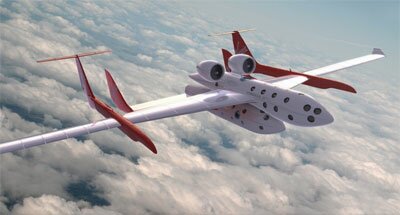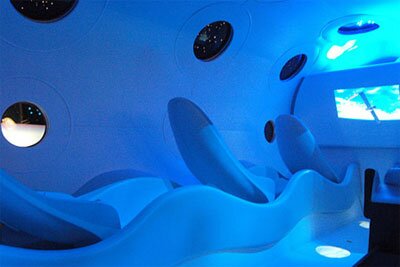OZ | February 3rd, 2008 | Events and Identity |  | Bookmark
| Bookmark

This year’s Australian Open signified a time of change for tennis.
For the first time in three years, Roger Federer or Rafael Nadal were not in a grand slam final. Former finalists Lleyton Hewitt and Marcos Baghdatis slugged it out till 4:45am local time - a record - in a classic third round match. The court even changed from rebound ace to plexi-cushion.
And the once unsightly umpire’s chair transformed into a noteworthy example of top design.
OZ | December 2nd, 2007 | Identity |  | Bookmark
| Bookmark

A Ward Sutton illustrative opinion piece from The New York Times has been making the blogosphere rounds for a couple of weeks now and I’ve been remiss not to highlight it. An analysis of campaign logo design, Reading Tea Leaves and Campaign Logos is political humor at its best.
OZ | September 17th, 2007 | Architecture, Aircraft and Identity |  | Bookmark
| Bookmark


Scaled Composites and aerospace designer Burt Rutan’s successful suborbital flights of SpaceShipOne in 2004, paved the way for commercial space travel. The following year Scaled Composites and Richard Branson’s Virgin Group created The SpaceShip company, which will initially manufacture five SpaceShipTwo suborbital vehicles for Virgin Galactic.
A prototype of SpaceShipTwo, VSS Enterprise, is slated to be unveiled later this year and features an interior designed by firm Seymour Powell. As in SpaceShipOne, circular windows, a total of fifteen, are scattered across the cabin including the floor and ceiling. The high-G’s exerted onto passengers during the climb and reentry have been reduced by ergonomic seats that automatically recline and shift.
Earlier this month Foster + Partners revealed their winning design for the world’s first private spaceport, the New Mexico Spaceport Authority Building, created in collaboration with engineering design services firm URS, SMPC Architects, PHA Consult, Balis and Company and Exploration-Synthesis Partners. This spaceport will be the launching pad for Virgin Galactic and SpaceShipTwo.
Continue reading ‘Commercial Space Travel’





